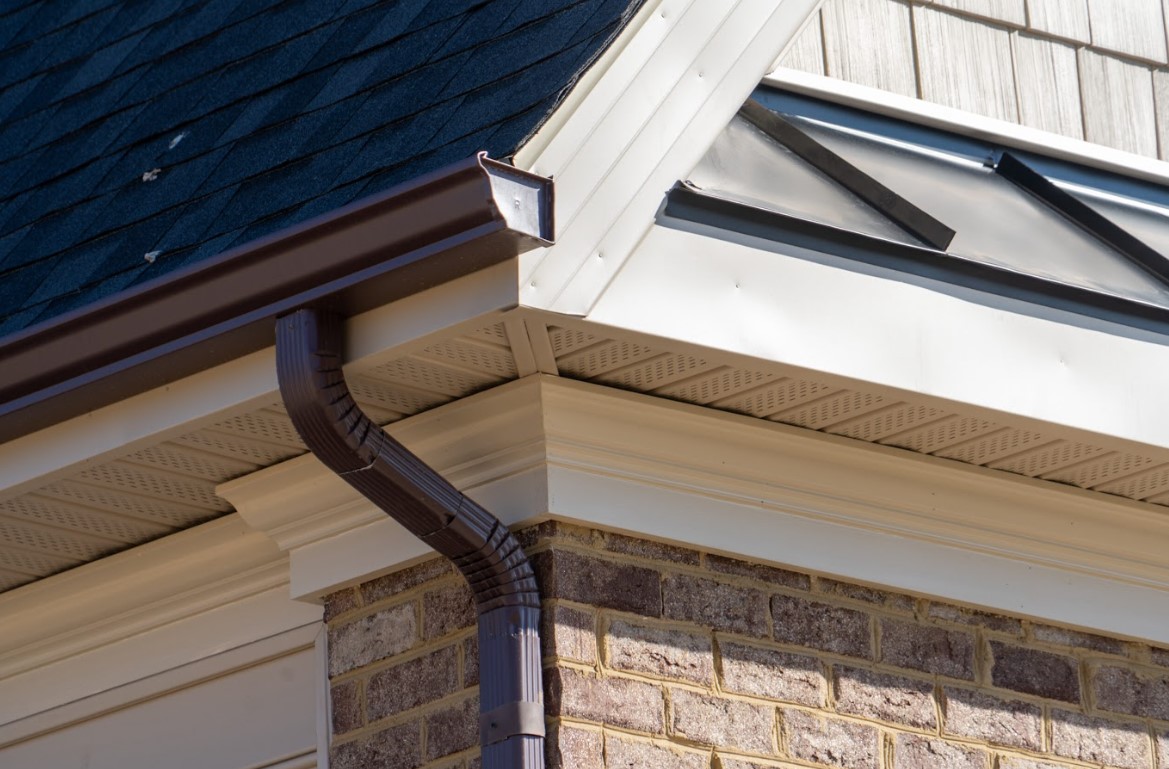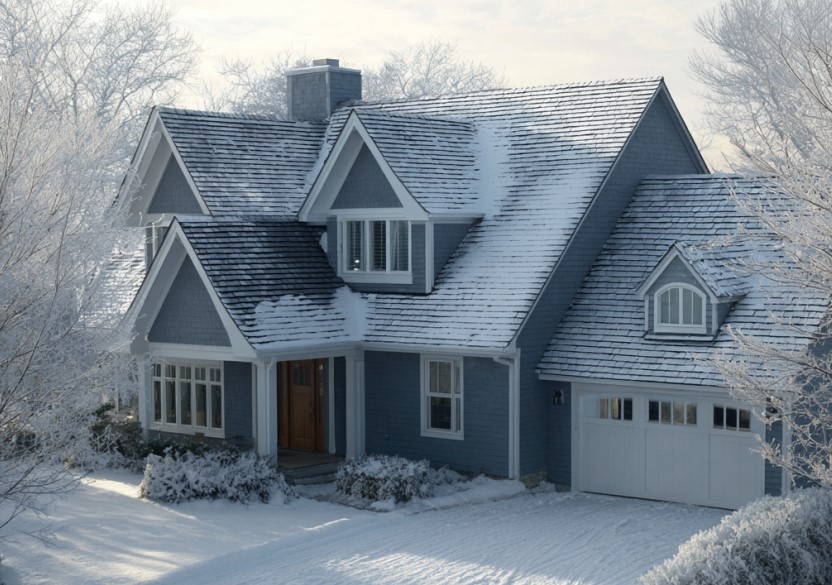Storm Damage Roof Checklist for Missouri Homeowners
September 29, 2025
Written By
All Trades Restoration Services

Missouri weather can be unpredictable. From heavy thunderstorms and hail to high winds and ice storms, your roof faces a constant barrage of potential hazards. After severe weather, it’s critical to inspect your roof quickly and thoroughly to prevent small issues from turning into costly repairs. A careful post-storm check can save you money, protect your home, and give you peace of mind.
Here’s a comprehensive storm damage roof checklist tailored for Missouri homeowners, highlighting what to look for and how to take action.
1. Safety First
Before climbing onto your roof or performing any inspection, prioritize safety:
- Avoid the roof immediately after a storm—wet surfaces and loose debris make it dangerous.
- Use binoculars for a ground-level inspection to spot obvious damage first.
- Wear protective gear if you must get on a ladder or touch damaged areas.
- Keep children and pets away from potential hazards.
If the storm caused severe structural damage, it’s best to call a professional roofing contractor immediately.
2. Inspect Shingles and Roof Covering
Shingles are your roof’s first line of defense. After a storm, check for:
- Missing or torn shingles – high winds and hail can rip shingles off completely.
- Cracked, curled, or buckled shingles – a sign that your roof has been stressed or weakened.
- Granule loss – look in gutters and downspouts for asphalt granules, which indicate aging or hail damage.
- Soft spots or sagging areas – could indicate water infiltration or compromised decking.
For metal roofs, inspect panels for dents, scratches, or loose fasteners that could compromise the roof’s integrity.
3. Examine Flashing and Seals
Flashing protects vulnerable areas like chimneys, vents, and roof edges. Damage here often leads to leaks:
- Bent, cracked, or lifted flashing
- Gaps around skylights, chimneys, or vent pipes
- Damaged sealant or caulking around roof penetrations
Even small gaps can allow water to seep into your attic during the next rainstorm.
4. Check Gutters and Downspouts
Storms can clog or damage gutters, preventing proper drainage:
- Debris accumulation – leaves, sticks, or hail debris can block water flow.
- Detached or bent gutters – water may overflow and damage fascia or siding.
- Downspout obstructions – ensure water is diverted away from your home’s foundation.
A functioning gutter system reduces water backup, protecting both your roof and your home’s structure.
5. Inspect the Attic
Your attic provides an inside view of potential roof leaks:
- Water stains on rafters or insulation – indicate moisture penetration.
- Mold or mildew growth – early signs of ongoing water damage.
- Damp insulation – reduces energy efficiency and increases the risk of structural damage.
Even if your roof looks fine from the outside, moisture inside the attic can signal hidden issues.
6. Assess Structural Components
High winds or hail can damage underlying structures:
- Check soffits and fascia boards for cracks, warping, or holes.
- Look for damaged decking if shingles or panels were torn away.
- Inspect exposed areas for signs of wood rot or weakened framing.
Structural damage may require more than a simple repair—don’t ignore sagging or weakened sections.
7. Document Everything
Before any repairs, document the damage thoroughly for insurance purposes:
- Take clear, detailed photos of shingles, gutters, flashing, and interior damage.
- Include dates and notes about the storm and observed issues.
- Keep records of professional inspections and estimates.
Proper documentation makes the insurance claim process smoother and ensures you’re covered for repairs.
8. Contact Your Roofing Professional
Even small storm damage can worsen over time if left unattended. A professional roofing contractor can:
- Conduct a full inspection using specialized tools.
- Identify hidden damage that might not be visible from the ground.
- Provide repair or replacement estimates and guidance for insurance claims.
- Ensure all work complies with Missouri building codes and weather standards.
Scheduling a professional inspection soon after the storm minimizes the risk of leaks and further structural damage.
9. Prevent Future Storm Damage
Once repairs are completed, take steps to protect your roof for the next storm season:
- Regular maintenance: Inspect shingles, flashing, and gutters twice a year.
- Trim overhanging trees: Reduces the risk of falling branches during storms.
- Install storm-resistant roofing materials: Impact-resistant shingles or metal panels can withstand hail and wind better.
- Upgrade roof ventilation and drainage: Ensures water and debris flow properly, preventing buildup and damage.
Proactive measures can extend your roof’s lifespan and reduce costly repairs in the long run.
Call in the Storm Damage Restoration Experts
Storm damage is a serious concern for Missouri homeowners, but timely inspections and repairs make all the difference. By following this checklist—assessing shingles, flashing, gutters, and attic spaces—you can catch problems early and protect your home from further harm.
If a storm leaves your roof compromised, don’t wait. Call a trusted roofing professional to inspect, document, and repair damage before small leaks turn into major repairs. Regular maintenance combined with prompt storm response keeps your home safe, efficient, and structurally sound—no matter what Missouri weather throws your way.
Recent Articles

Residential Roofing
Roofing Contractor in St. Peters: Finding the Right Professional
Find the right roofing contractor in St. Peters with expert tips from All Trades Restoration Services. Learn what to look for to protect your home and ensure lasting roof quality.
November 17, 2025

Residential Gutters
Gutter Systems in O'Fallon: Keeping Your Home Dry and Protected
Learn how expert gutter systems in O’Fallon protect your home from leaks, erosion, and foundation damage. Trusted installation and repair from All Trades Restoration Services
November 11, 2025

Residential Roofing
Winter Roof Preparation in Missouri: Getting Your Home Ready
As the winter chill sets in across Missouri, it's crucial to prepare your roof for the season's harsh conditions. Protect your home with our expert tips on winter roof preparation in Missouri.
November 4, 2025

Residential Roofing
Best Roofing for Hail in Missouri: Protecting Your Home
Missouri homeowners know the importance of protecting their homes from severe weather, especially hail. Explore the best roofing solutions to safeguard your property and withstand nature's unpredictable forces.
November 1, 2025

